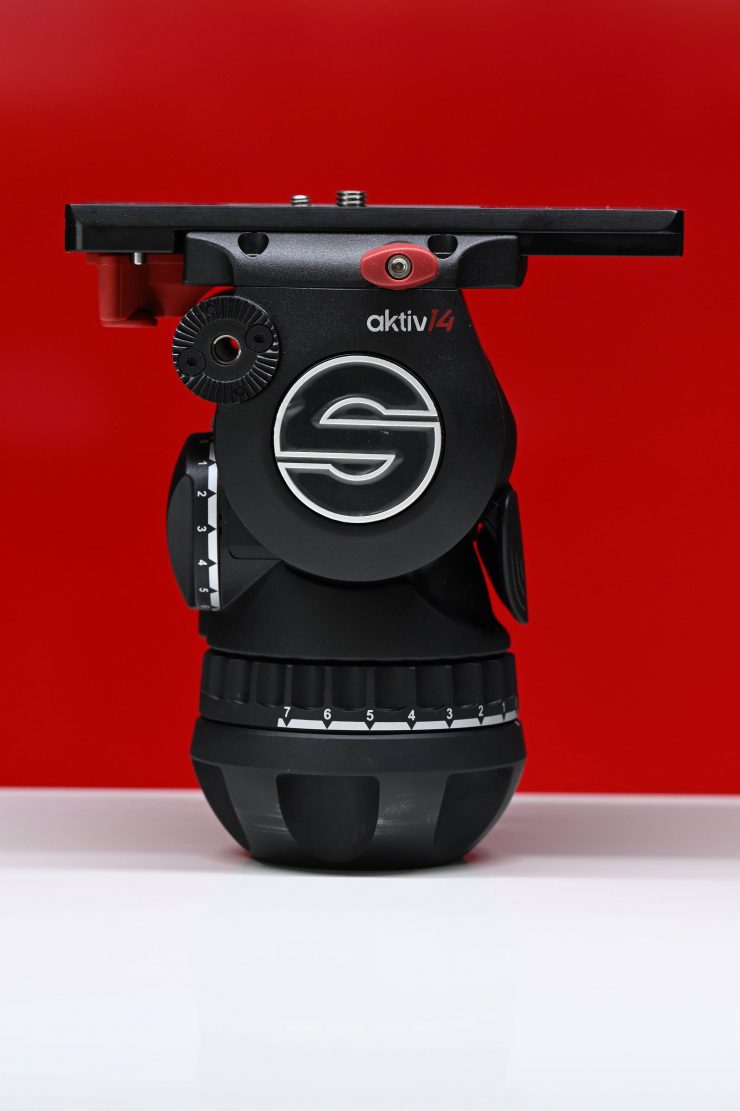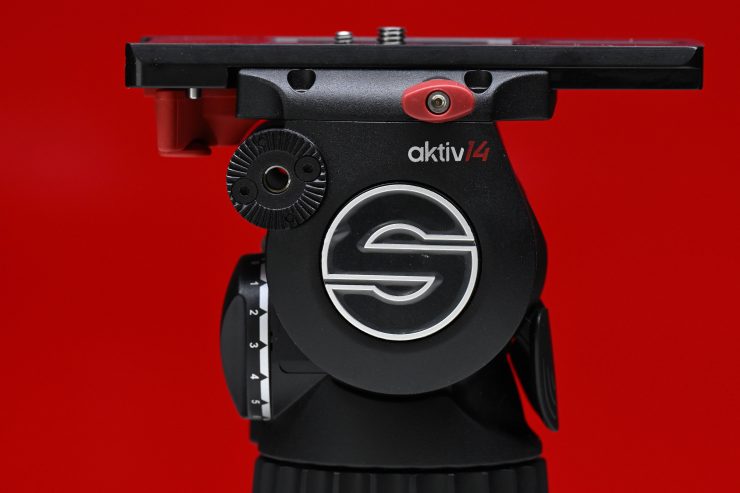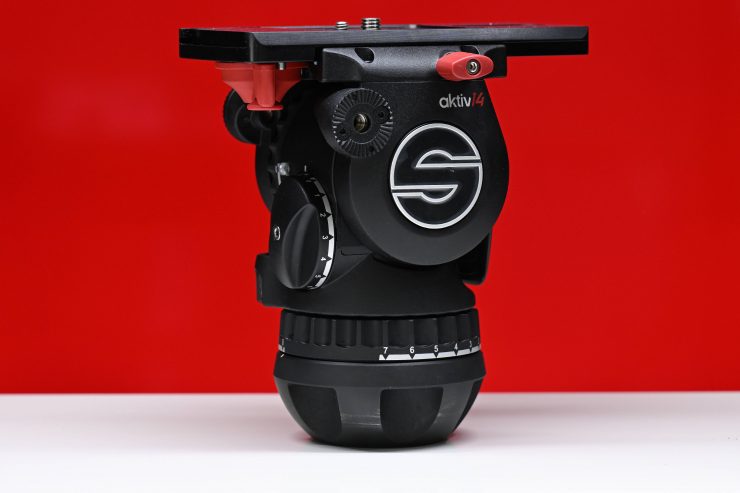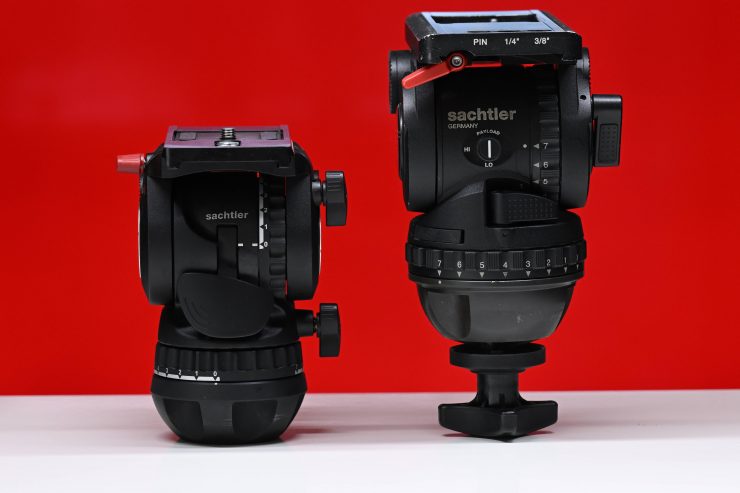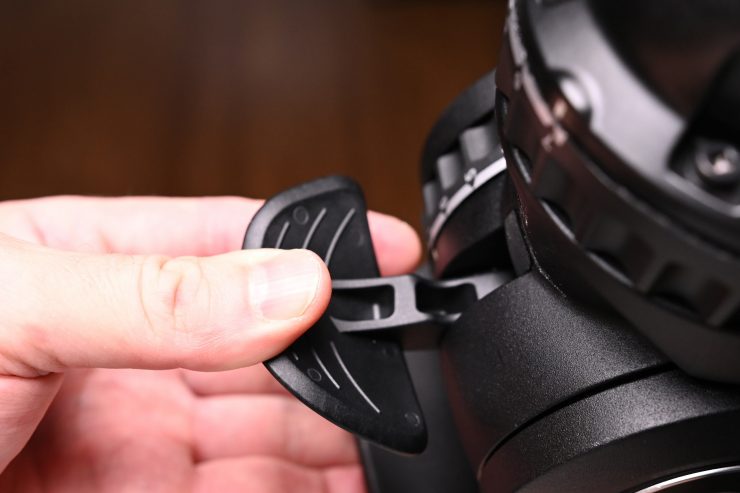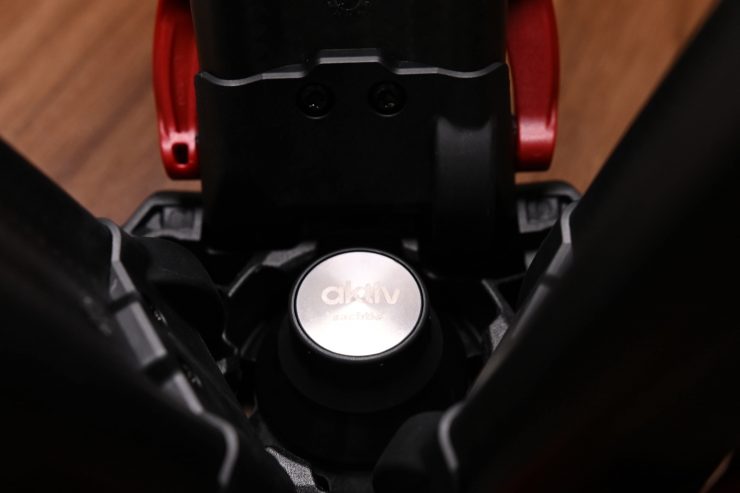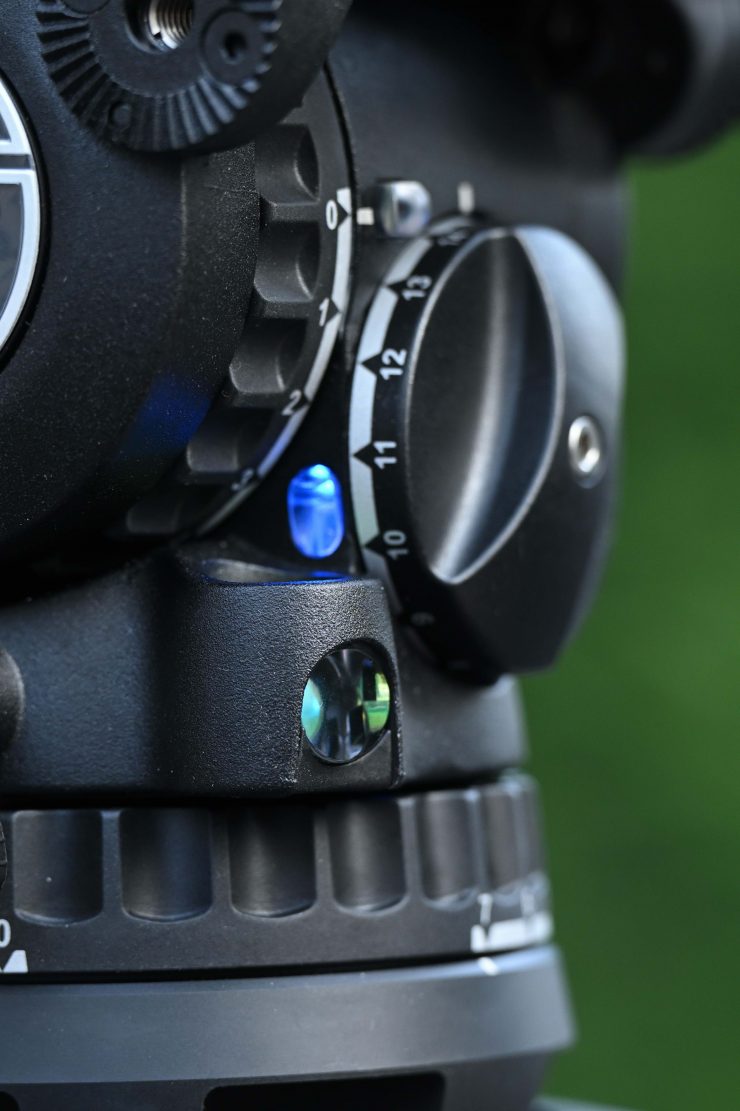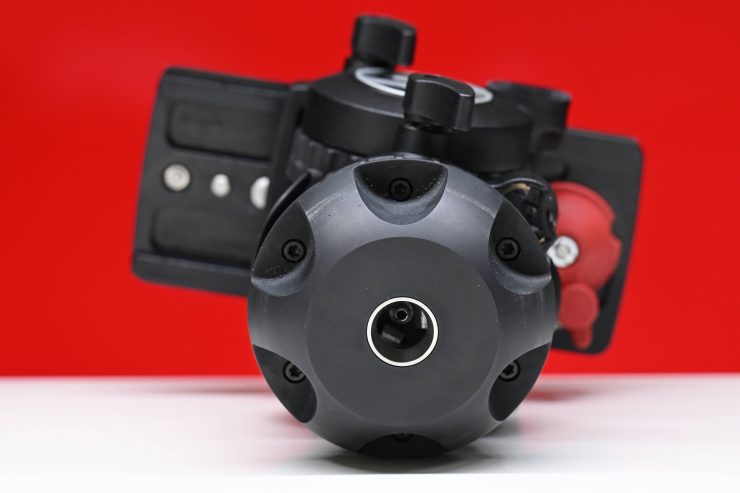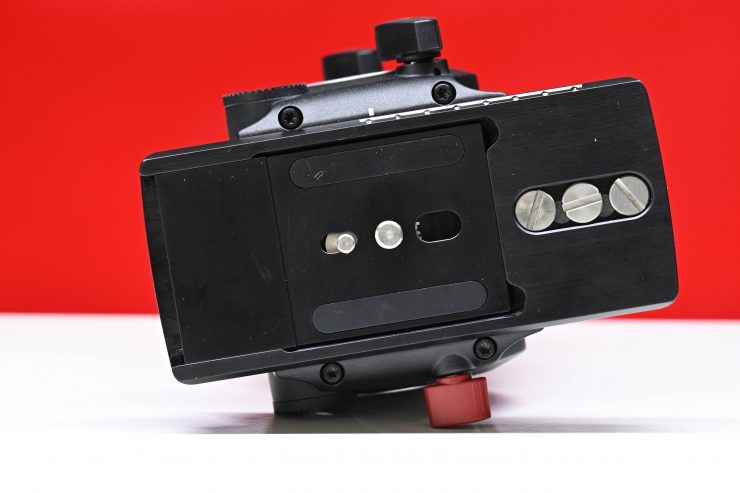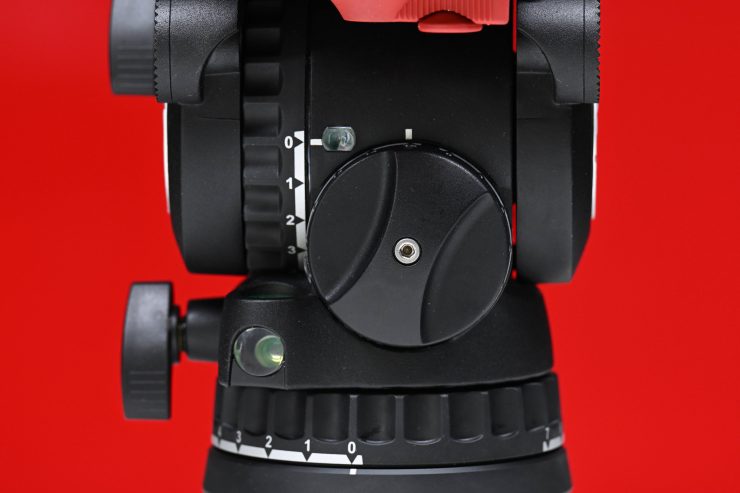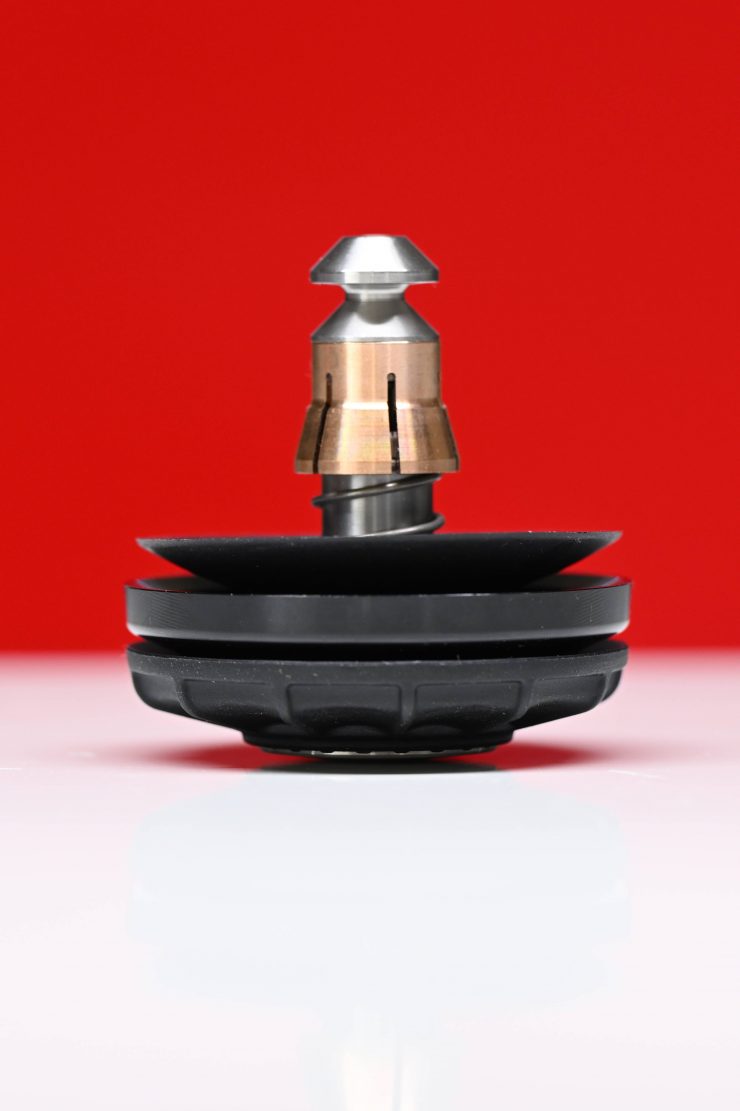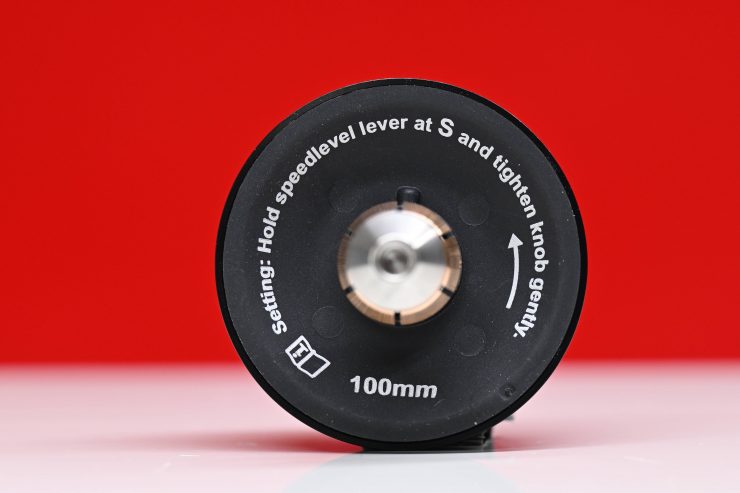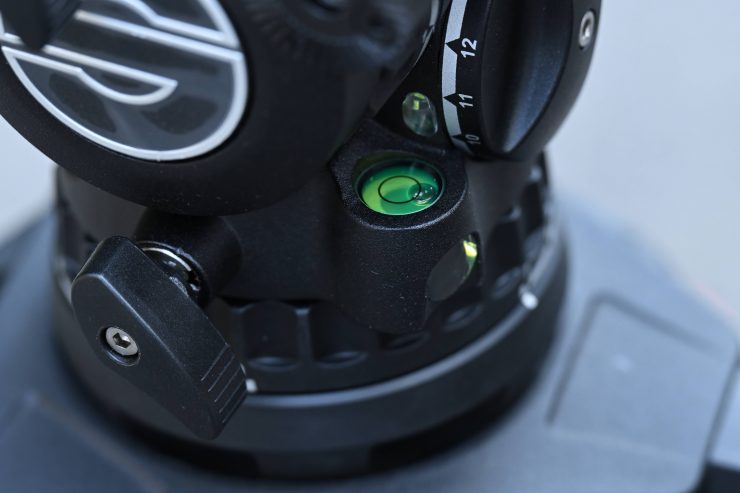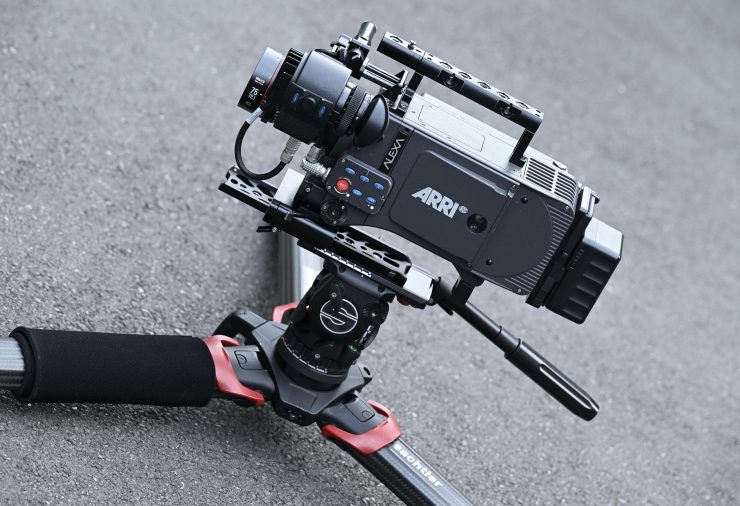
The Sachtler aktiv14T is part of Sachtler’s aktiv Fluid Head range. If you’re not familiar with the aktiv fluid heads they are a brand new take on a product that hasn’t fundamentally changed in decades.
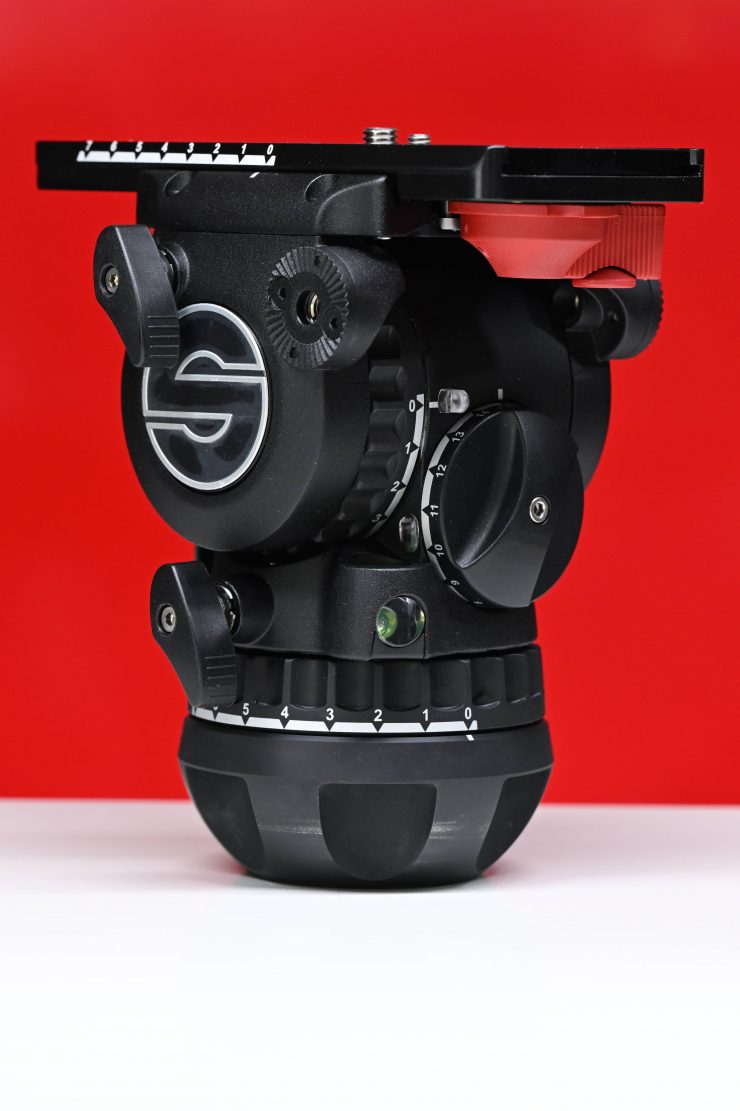
Sachtler originally announced the aktiv6, aktiv8, aktiv8T, and the aktiv10. They then followed this up with the aktiv10T, aktiv12T and aktiv14T. All these fluid heads feature the same basic design and functionality. Only the size and payload capacity are different. The aktiv T versions are the same as the aktiv versions except they feature a touch & go loading plate.
Key features
- Unique SpeedLevel technology for quick balancing of the head
- PrismBubble
- SpeedSwap system for quickly taking the head on and off
- Allows you to capture very low angle shots
- Designed for use in extreme temperatures
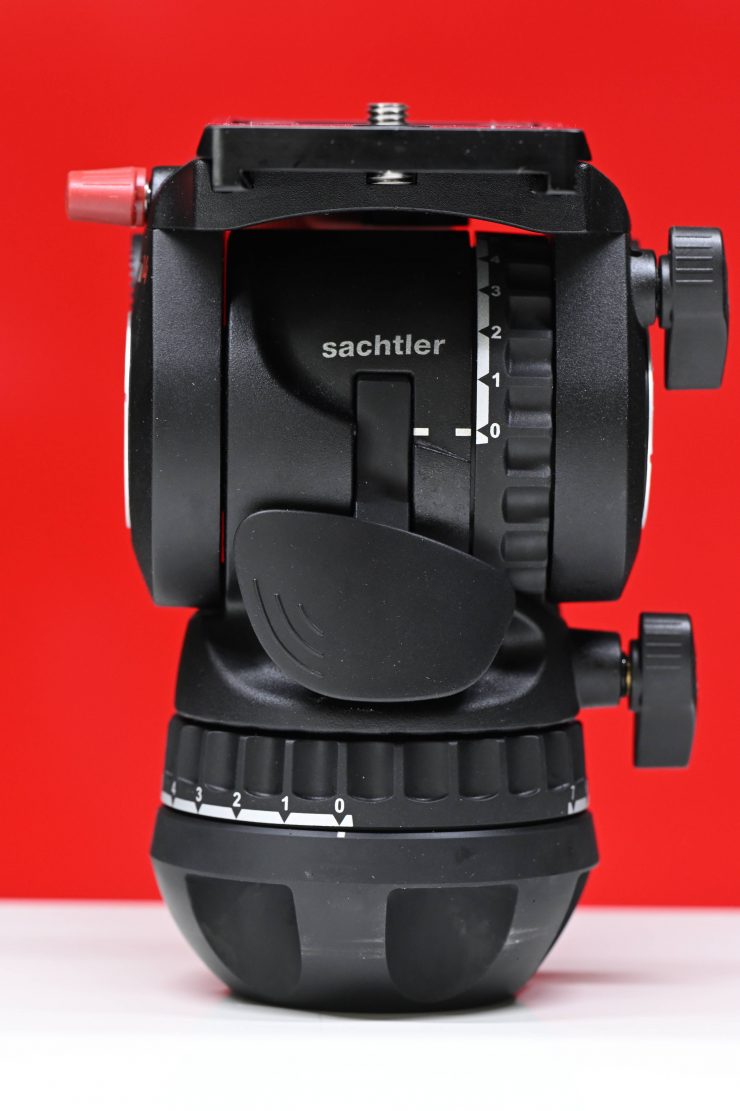
While the aktiv Tripod Head range maintains the exact same fundamental principles that make fluid heads so good, Sachtler has come up with an entirely new way of both balancing the head and removing/attaching it.
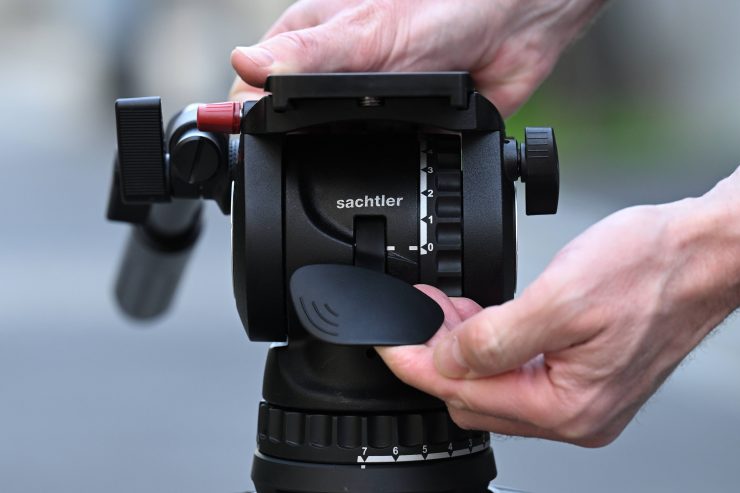
By taking away the traditional ball head level clamp, Sachtler has placed the leveling device on the head itself. Making a fundamental change to how people balance and level a fluid tripod head is a risky move for any manufacturer to attempt. Sachtler is no stranger to making radical changes to tripods as evidenced by its Flowtech series.
Now, before we get further into the review, I think it is important that you know the history of the fluid head and some of the history behind Sachtler.
If it ain’t broke don’t fix it
The fluid tripod head was invented by Australian Robert Miller way back in 1946. That same year he was granted the Australian patent, and then 3 years later he got a US patent for the design. Robert went on to start the Miller Camera Support Company in 1954, which is still going strong today. Also in 1954, he came up with a user-variable dampening system that drastically improved the smoothness of pans and tilts.
Since the 1950s the fluid head has changed and improved, and various companies have taken it in slightly different directions, but the fundamental principles of how it works remain the same.
A fluid head, as its name suggests, is filled with viscous oil that circulates and coats all the mechanical components that are inside the head. It is this fluid that allows you to create smooth pans and tilts.
The fluid head design did and still does work exceptionally well, and that is why it is still in use today. If it ain’t broke don’t fix it. Just make it better.
Wendelin Sachtler
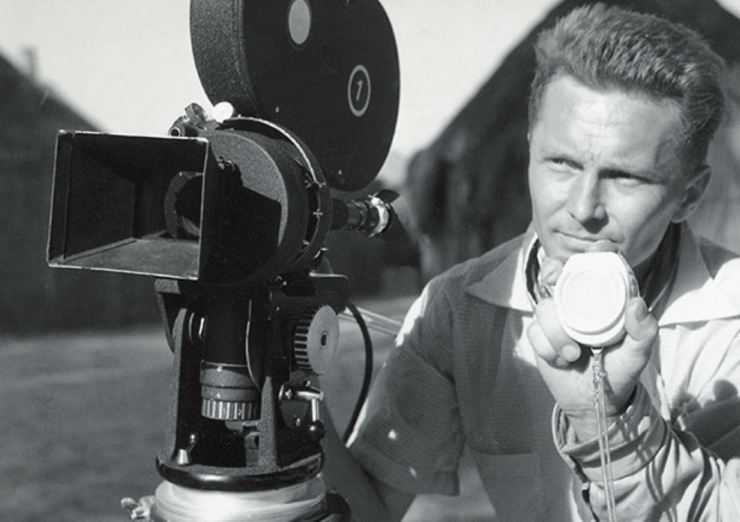
To understand where a company is heading, sometimes you need to look at where they have been. Wendelin Sachtler started his own company manufacturing tripod heads in 1958.

In 1967 Sachtler developed its first fluid heads that featured lubrication grease dampening. 10 years later in 1977, Sachtler patented its permanent-sealed damping system. By utilizing hermetically sealed modules, Sachtler was able to make the tripod head much more resistant to external elements.
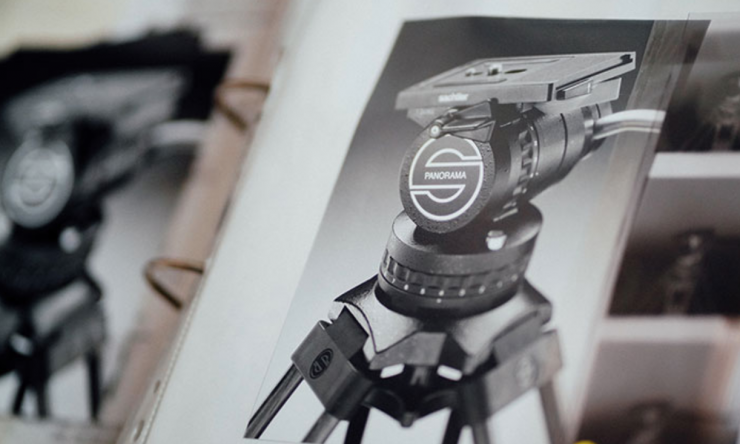
One year later, in 1978, Sachtler brought out the first carbon fibre tripods and its Panorama head 7+7 with a seven-stage damping and counterbalance system.
Fast forward to today and Sachtler has released countless tripods and fluid heads, which leads me to the aktiv fluid heads.
What makes the aktiv series unique?
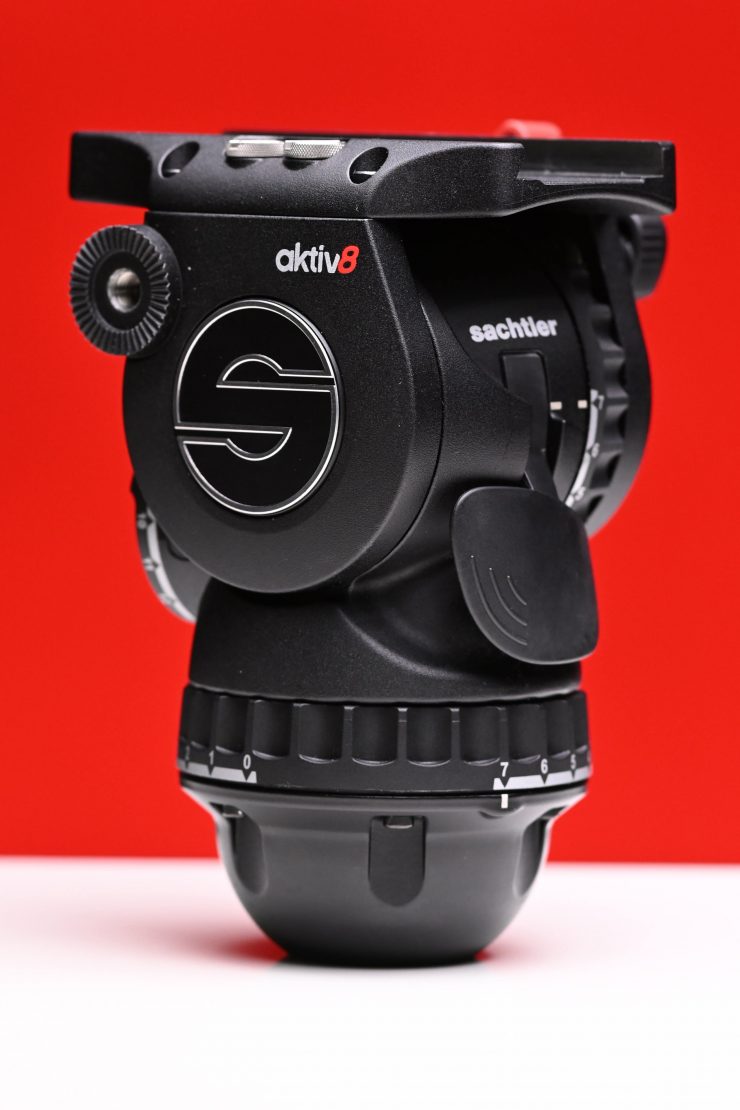
By essentially removing the ball head leveling clamp and transferring the mechanism to the tripod head itself, it allows the user to keep their hands at the same height when making any adjustments to the head.
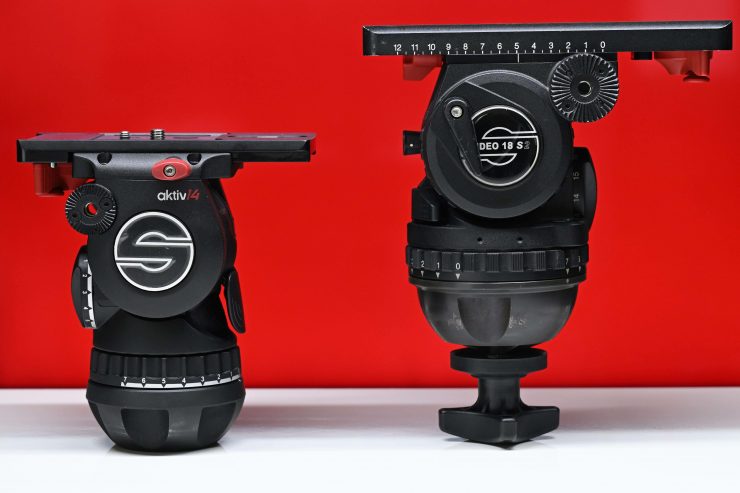
Above you can see the difference between the aktiv14T and an 18P S2. This is just to show you how the whole design of the Speed Level system differs from most traditional fluid heads.
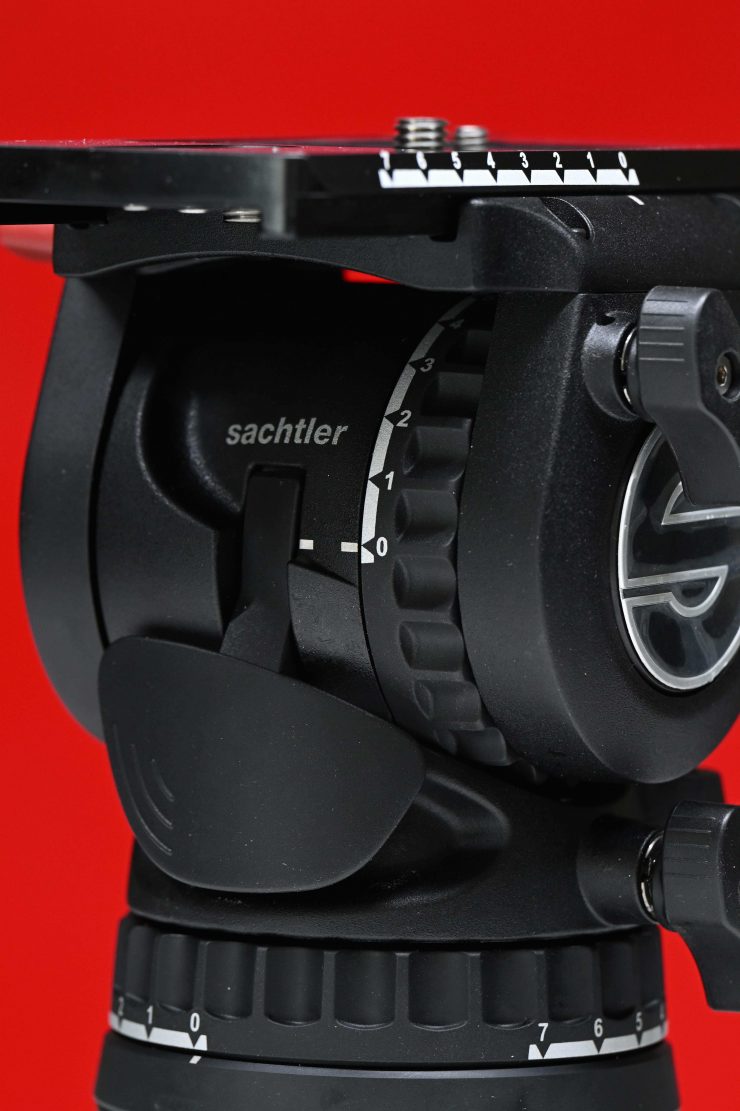
Instead of having to reach down and undo a clamp, then level off your camera and then do that clamp back up, you simply pull up on a lever, make the adjustment and then pull it back down. It is that simple.
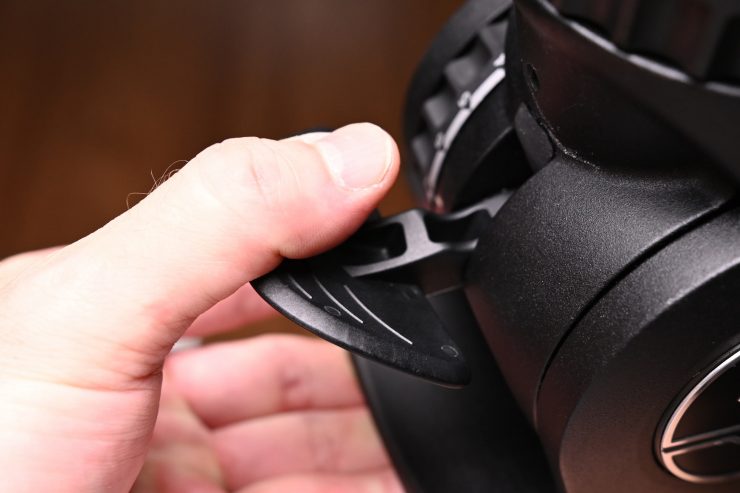
This saves a ton of time, especially for anyone who is leveling off their tripod head numerous times a day. It also means you aren’t constantly reaching underneath the tripod which can put unnecessary strain on your back.
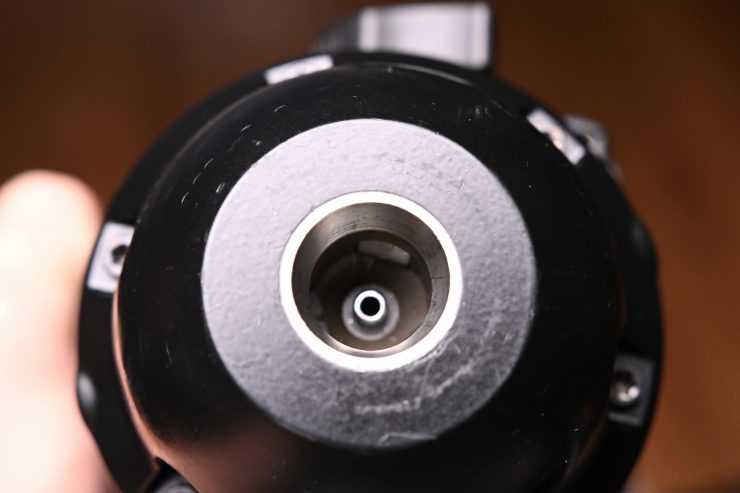

Open position 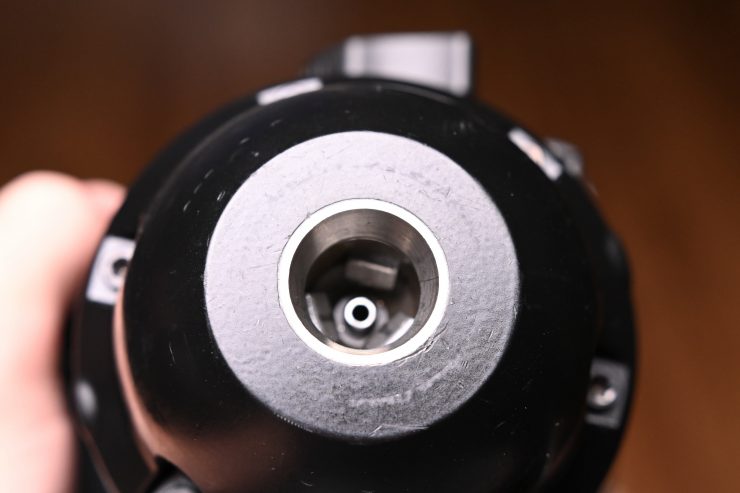
Locked position
On the base of the aktiv14T head, you can see the locking mechanism. When you lift up the leveling clamp on the head, this locking mechanism loosens so you can adjust and level the head. Once you release it and move it down, the locking mechanism engages.
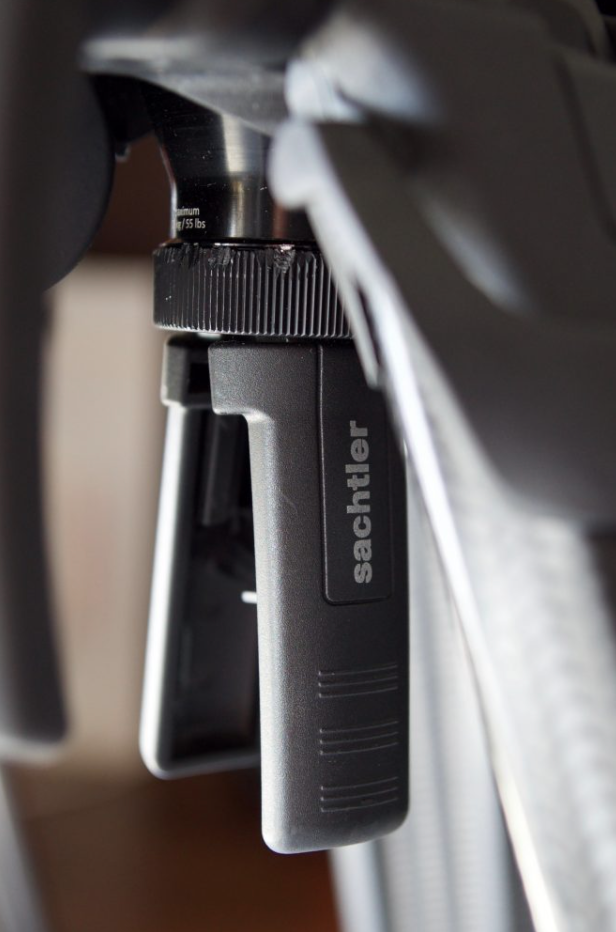
Now, Sachtler did bring out a Speed Level Clamp a few years ago which did make things a lot quicker, however, it wasn’t compatible with the Flowtech 75 tripod, it only worked with the Flowtech 100 and other Sachtler 100mm bowl head tripods. I think one of the reasons why the aktiv series was designed in the first place is probably because the Speed Level Clamp wouldn’t work with the Flowtech 75.
As far as how the entire mechanical design works for the Speed Level system, well that is unclear. Sachtler hasn’t divulged that information. I am sure it is probably a proprietary design and they want to keep that information confidential.
Installation
The bowl connector has to be fitted and adjusted before the aktiv fluid head can be used. Once set, it is left on the tripod and remains ready without further adjustments. Above you can see a video that shows you how to use it.
Snap-On, Snap Off
Because you don’t have to undo a traditional ball leveling clamp, you can remove the aktiv14 head from the Flowtech 100 really quickly. It utilizes a system that Sachtler is calling SpeedSwap.
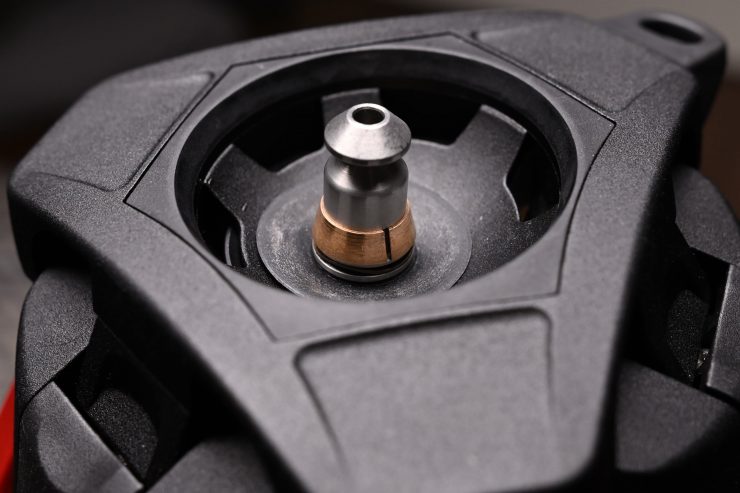
You can just pull up on the leveling clamp on the head and the head will detach. This way you can quickly move it to a slider, dolly, jib, etc.
I did find that the first time I tried to remove the head I couldn’t do it. This left me puzzled until I found out how to do it.
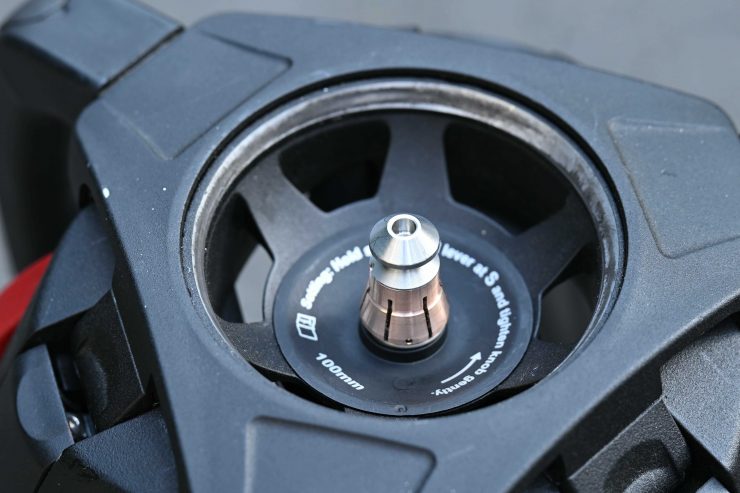
What I found is that if the bottom clamp (on the base of the fluid head) is too tight the head will not come off. What I needed to do was to loosen the bottom connector slightly by pushing the Connector Knob upward and turning anticlockwise.
This is the same thing you have to do if you can’t put the head back on. In saying that, once it is adjusted you basically don’t have to ever touch that bottom clamp again.
I did find this whole process a little confusing at first, but once you understand how to do it, it is a very quick and easy process.
Other Features
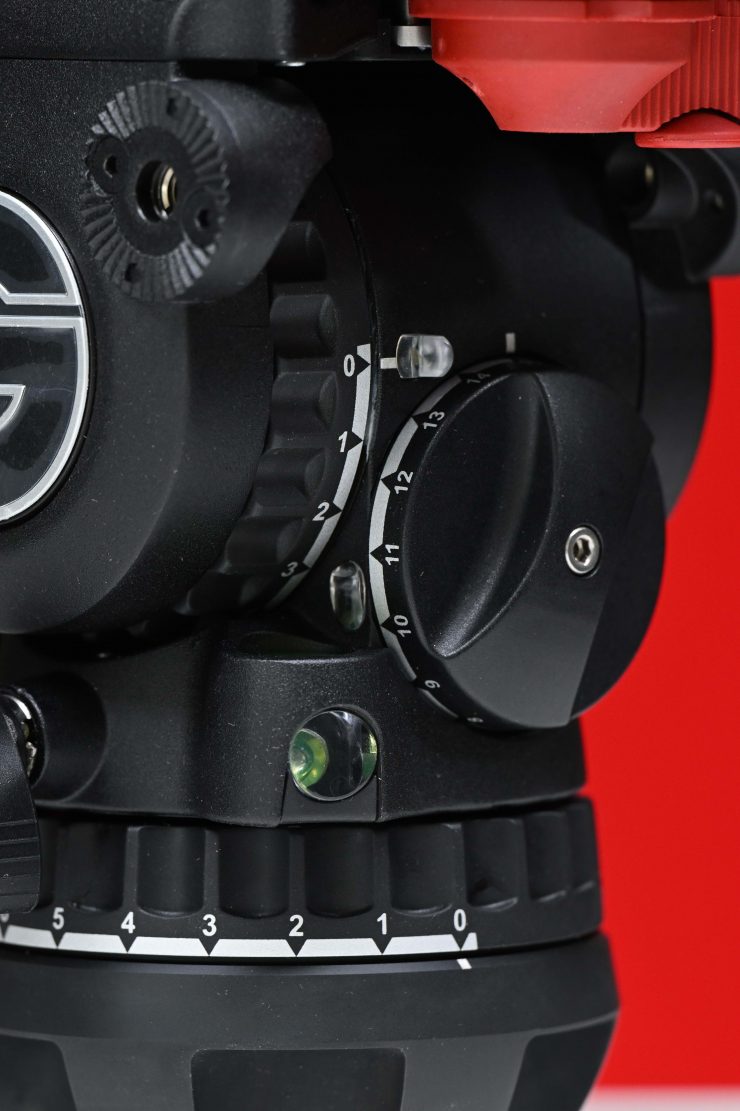
One of the smallest features, but arguably one of the most useful is the way Sachtler has designed the leveling bubble. By using a prism you can see the bubble even when the head is too high to view from above.
This Prism also acts as the On / Off switch for illumination. In addition, the prism bubble may be lit on its own or with the control LED’s to enable setup up in low light conditions.
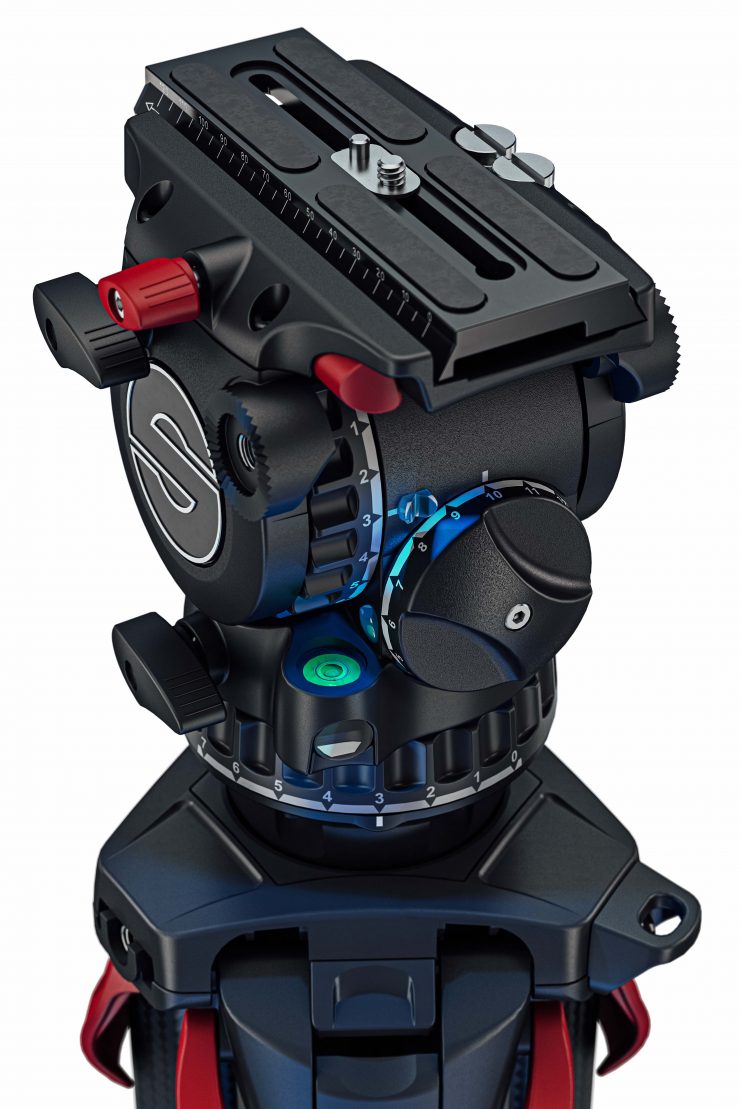
The illumination will be activated by pushing the bubble prism window. Here is how it works:
- Pressing the window briefly will turn on the level bubble LED for
approx.10s ± 1s. - Pressing and holding the window for >1s will turn on the level
bubble LED and all control LED’s for 20s ± 2s. - Pressing the window again when any of the illuminations are on,
will turn every LED off.
The great aspect of this design is that one bubble actually becomes two bubbles. That way you can see it from the side, from the top, or from the bottom. This means that if you put the tripod at any height you can clearly see the bubble.
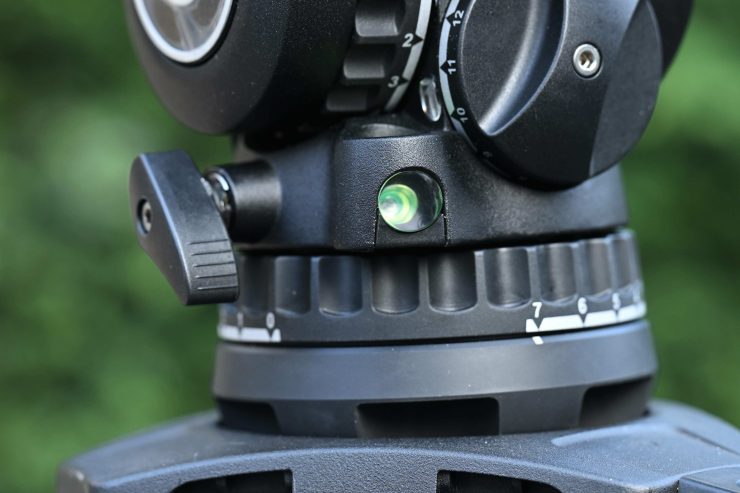
If you press the button to illuminate the bubble, it not only lights up the bubble, but it also illuminates both the pan and the tilt tension mechanisms.
Unlike on some of the smaller-sized aktiv heads, Sachtler gives you a panhandle that telescopes in and out so you can adjust the length.
Build Quality & Design
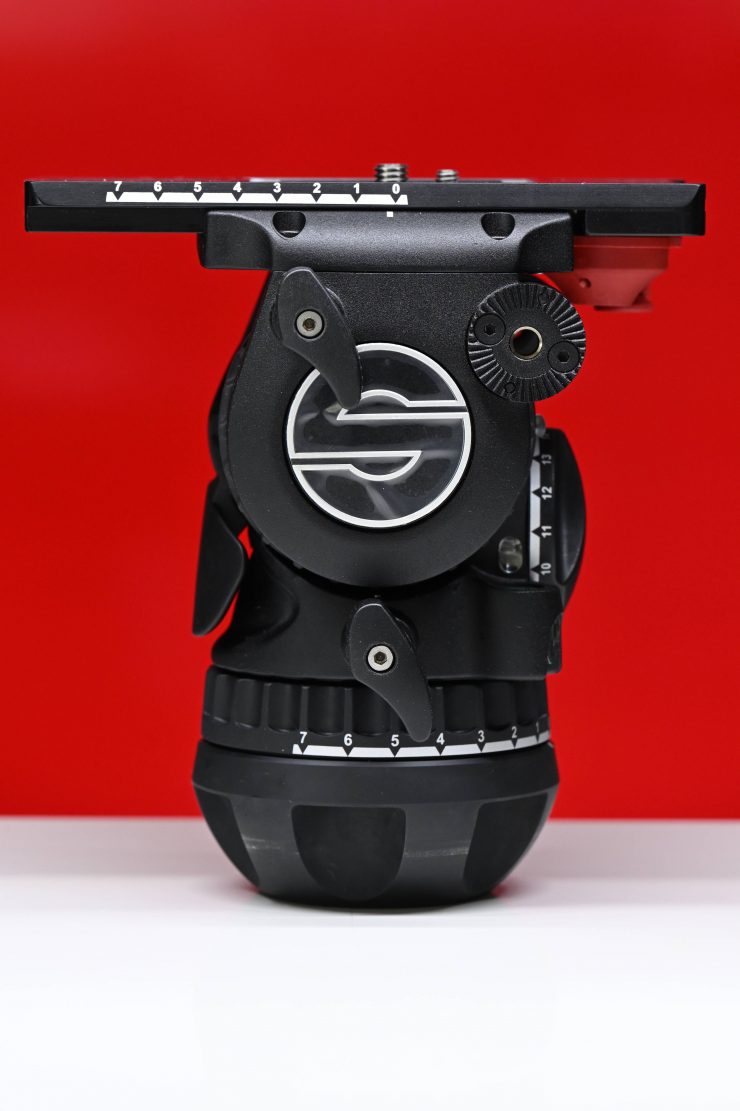
The build quality is excellent, and everything works as advertised. Sachtler does a lot of testing before they release a product because tripods and fluid heads are always going to take a beating in the field and be used in some pretty extreme environments. The aktiv heads will work in temperatures from -40°C (-40°F) to +60°C (+140°F). The aktiv heads have been in development for the last few years, however, Sachtler started working on the idea way back in 2014.
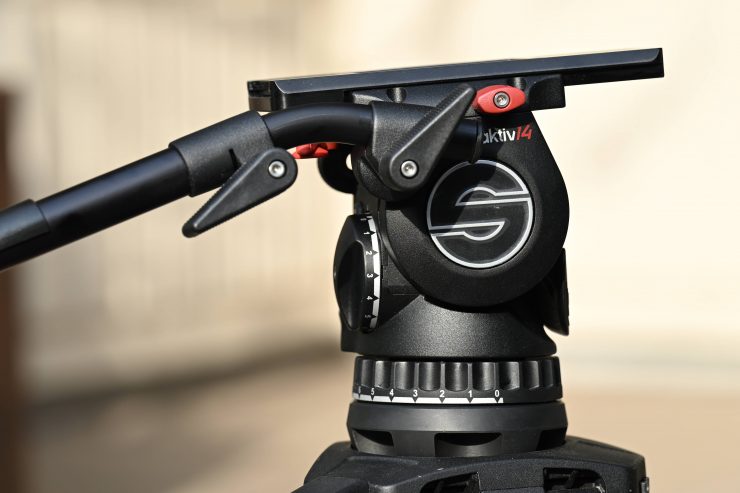
The design is modern but functional. I personally like that Sachtler has managed to keep the fluid head nice and compact. The new leveling clamp doesn’t take up any additional space and it doesn’t get in your way when you are operating.

I think some people may well think that the leveling clamp may look a little weak, but I can assure you that it isn’t. This is very robustly made and I wouldn’t have any concerns over its long-term longevity.
The aktiv14T weighs 7.5 lb / 3.4 kg. As a comparison, the Sachtler 18P S2 weighs 9 lb / 4.1 kg, and the Miller CiNX 3 Fluid Head tips the scales at 8.4 lb / 3.81 kg.
I can’t speak for the longevity of this new design as that is only something I could know after many years of use. I know Sachtler does pretty rigorous and extreme testing with its products, so it will be interesting to see how these new heads hold up over time.
Payload capacity
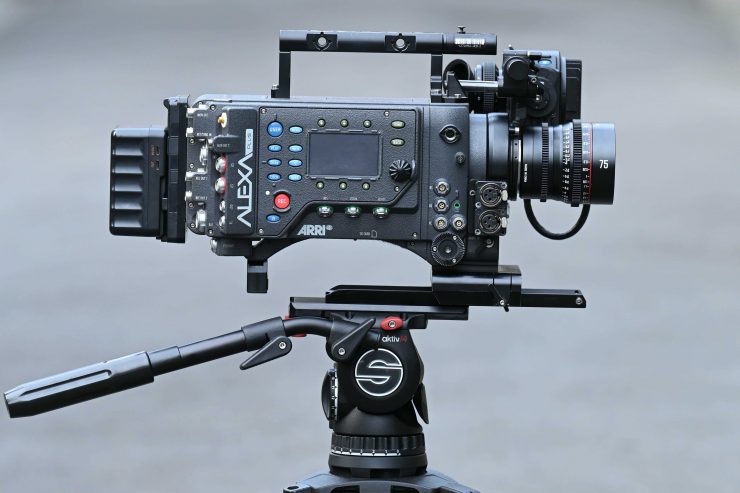
The payload capacity of the aktiv14T is 16kg / 35.3 lb. The nice aspect is that they take payloads from 0kg up to their maximum allowable weight. This means you can use them with a wide variety of cameras.
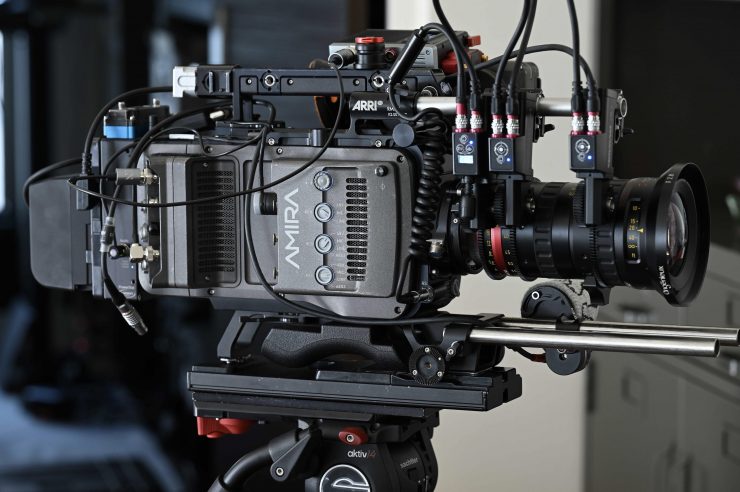
I tried the aktiv14T out with a variety of different cameras and payloads and it performed as advertised.
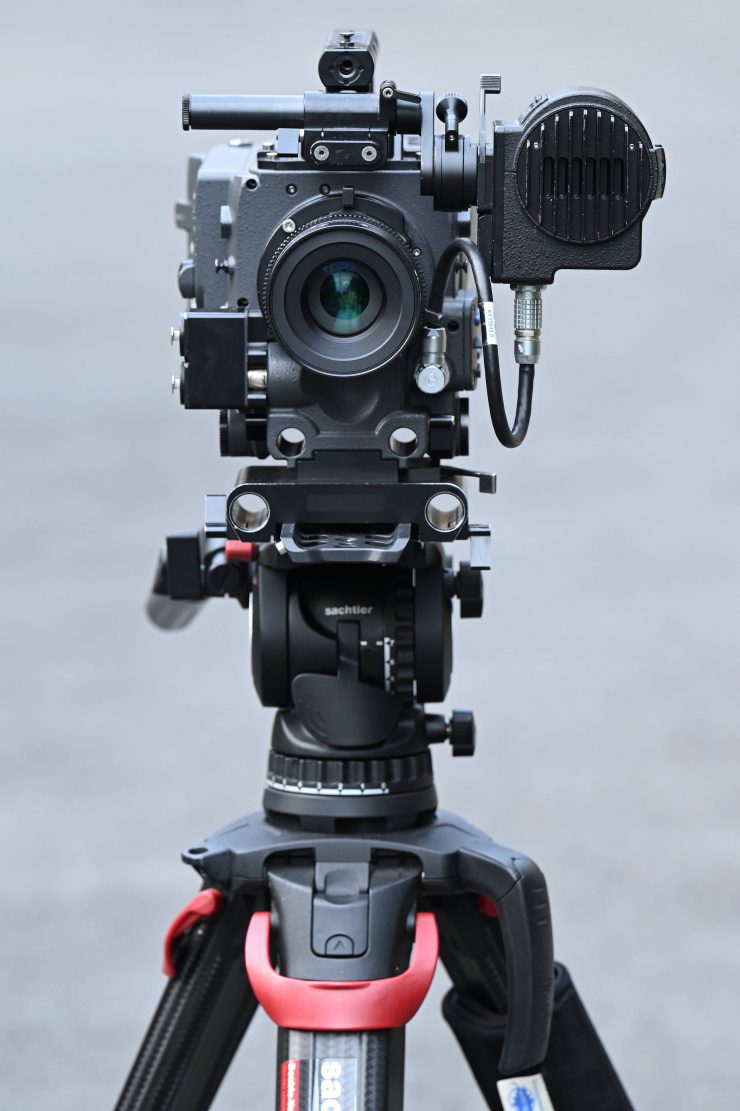
The payload capacity of the aktiv14T is reasonably impressive, especially considering how much it weighs. However, because of the new design, the aktiv14T has a lower payload capacity than a Sachtler 18P S2. From what I understand, there is a payload limitation is due to the limitations of the aktiv design.
How does this payload capacity compare to some other 100mm bowl head fluid heads on the market?
| Payload Capacity | |
| Sachtler aktiv14T | 0kg to 16kg / 35.3 lb |
| Sachtler 18P S2 | 4kg to 21.99kg / 48.5 lb |
| Sachtler 7+7 | 4kg to 21.99kg / 48.5 lb |
| Miller CiNX 3 | 1kg to 18.96 kg / 41.8 lb |
| Miller CiNX 5 | 2kg to 20.96 kg / 46.2 lb |
| Miller CiNX 7 | 5.99kg to 24.95 kg / 55 lb |
| Vinten Vision 10AS | 6.49kg to 17.01kg / 37.5 lb |
| Cartoni Focus 18 | 6kg to 18 kg / 40 lb |
As you can see the aktiv14T’s payload capacity is lower than most competing options. This is something you ned to carefully consider, especially if you are running larger camera packages.
Smoothness of the head
Having a smooth head is a must and there is nothing worse than using a tripod that isn’t smooth or doesn’t have enough resistance.
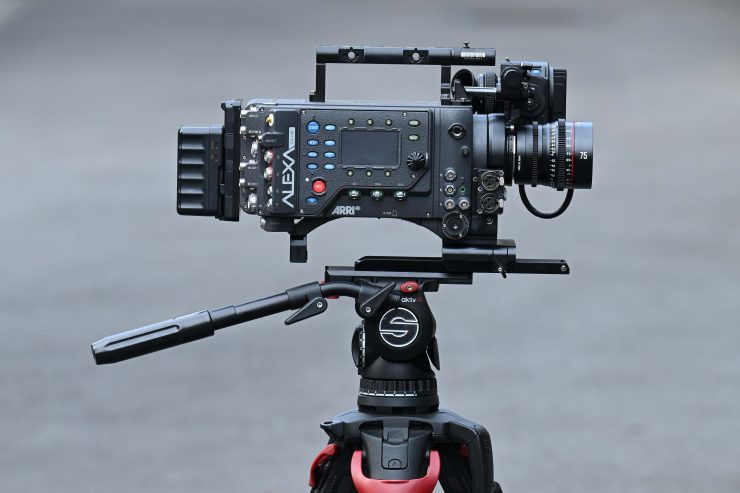
The head looks small when you are putting a large camera on it, but appearances can be deceiving. The actual head is roughly the same size as an 18P S2, however, because of the design, the base of the head is significantly smaller. The aktiv14T has more tension than I was expecting, but that is actually a good thing. The pan mechanism is really nice and it allows you to create very smooth movement. There are 7 stages of adjustment on the pan axis to choose from
The tilt mechanism is also good, and it also allows for 7 stages of adjustment.
The aktiv14T is very smooth to use and I found I could constantly do repeatable pans and tilts with no issues. It is good to see that the performance of the head hasn’t been compromised with the newly changed design. I didn’t get any backlash or strange movements even when moving the head quickly. Do I think it is as smooth as the 18P S2? Personally, I found that while it is close it probably lags a little behind the 18P S2. I think this is probably due to the 18P S2 having a higher payload capacity.
Versatility
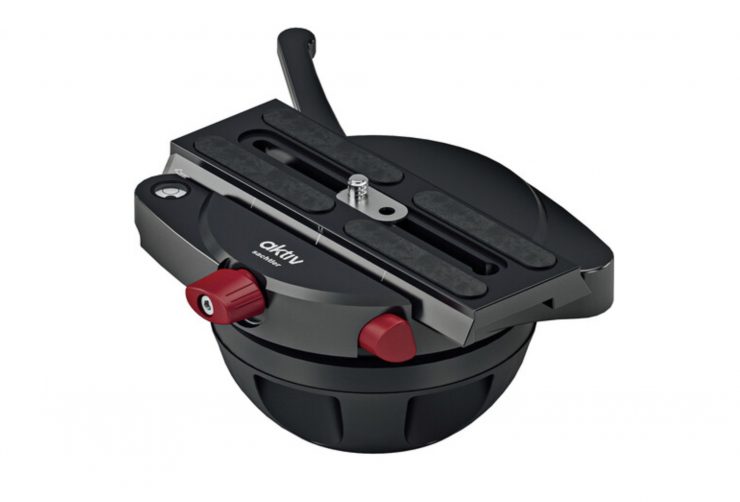
Sachtler has designed the Aktiv 8 with versatility in mind, however, this does come at an additional cost. If you want to mount the aktiv14T onto a slider you can through the use of the optional Sachtler aktiv Slider to 100mm Tripod Adapter.
Designed to compliment Flowtech Tripods
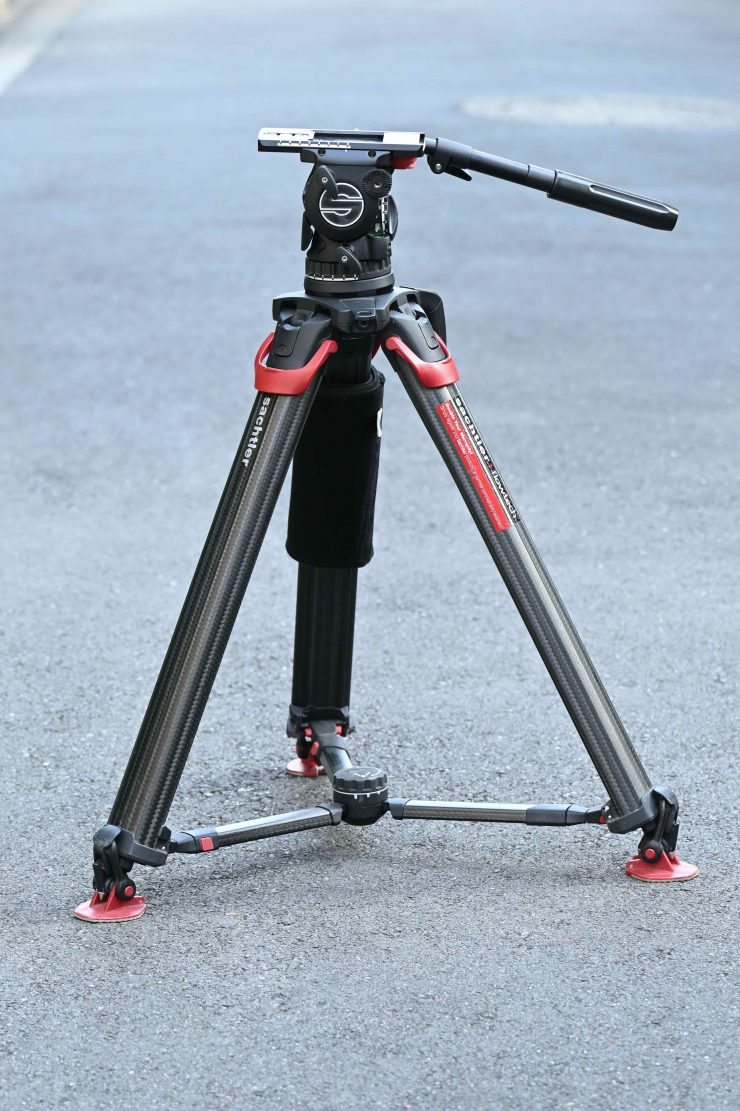
A few years ago Sachtler announced the Flowtech 75 and then the Flowtech 100. These tripods were a direct consequence of being able to think about what modern materials can do and how those capabilities should influence what a tripod actually looks like. Changing the very design that has been so successful for Sachtler over many decades was a risky endeavor. You don’t want to change the design just because you can, you only do it if you end up with a product that is better than what was already available. Thinking outside the box paid off for Sachtler, and the Flowtech 75 and subsequent Flowtech 100 have been very well received by shooters around the world.
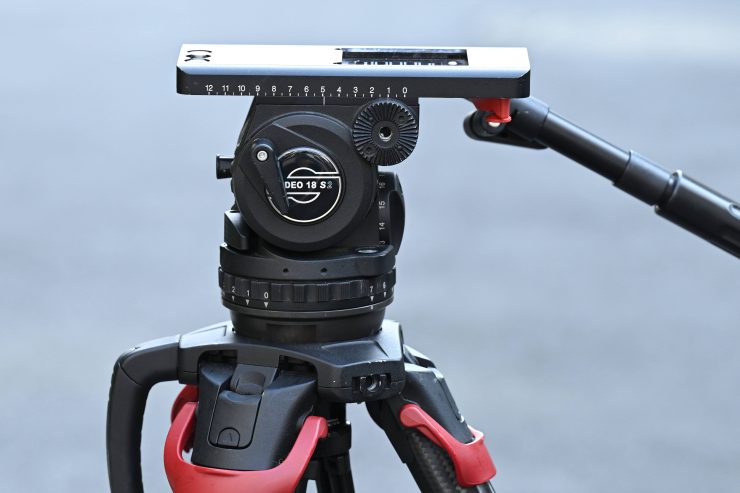
The aktiv Tripod Heads follows the same philosophy as the Flowtech tripods. By utilizing modern materials and different design techniques, Sachtler has been able to fundamentally change how you level off and remove/attach your tripod head.
Real World Use
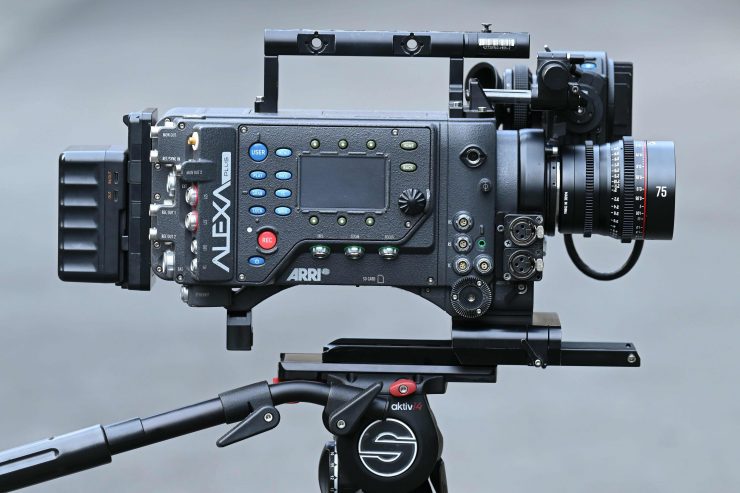
I tested the aktiv14T with a Flowtech 100 tripod with a variety of cameras to see how it performed.
With tripod heads, most of us have built up muscle memory when it comes to balancing the head. I found that when I first started using the aktiv14T I kept forgetting where the balance level was. I instinctively kept reaching underneath the tripod. Like any new product, the aktiv14T does take some getting used to.
You may well find that you don’t like it the first time you try it. I found it to be one of those products where once you get used to it you start to like it more and more.
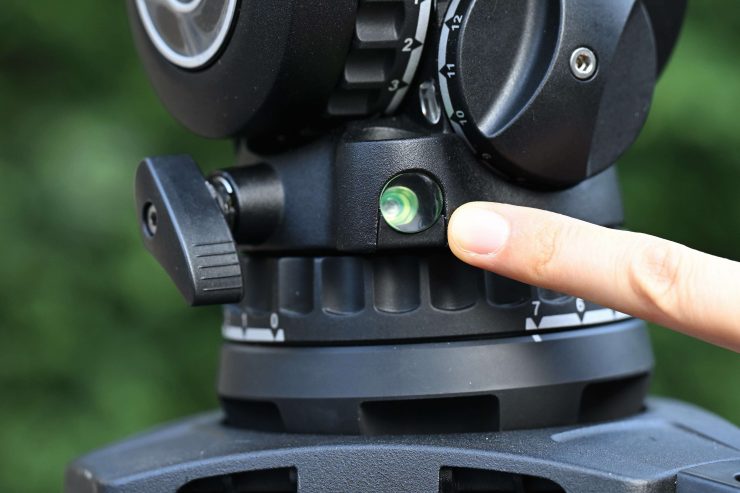
The bubble prism is also a great addition, and it makes a huge difference during real-world use. Being able to clearly see the bubble even when your tripod is up very high solves a very real-world problem that a lot of operators face.
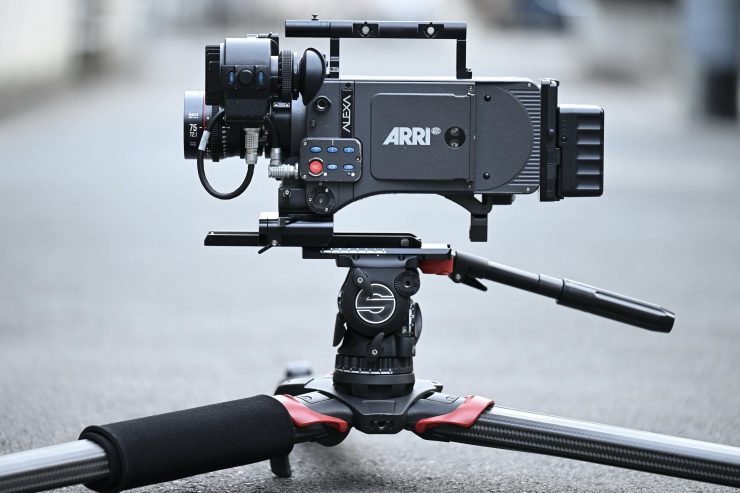
Another great aspect that I really think shouldn’t be overlooked, is that when you combine the aktiv14T with a Flowtech 100 you can get super low angle shots. As there isn’t a ball head adjustment underneath the head you can literally put the Flowtech 100 directly on the ground. This is a great feature. You can get shots from a lower angle than if you were using a traditional high-hat.
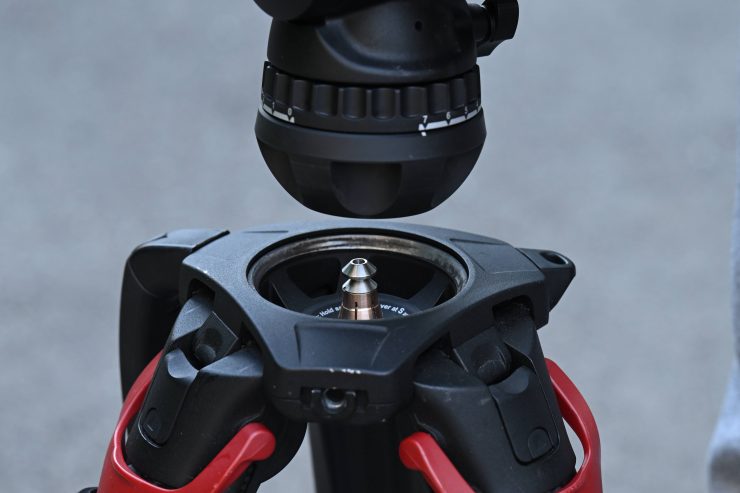
Taking the fluid head off or putting it back on the tripod is a super easy process. If you are moving a tripod head from a tripod to another device, having the ability to do it very quickly saves a lot of time over the course of a day.
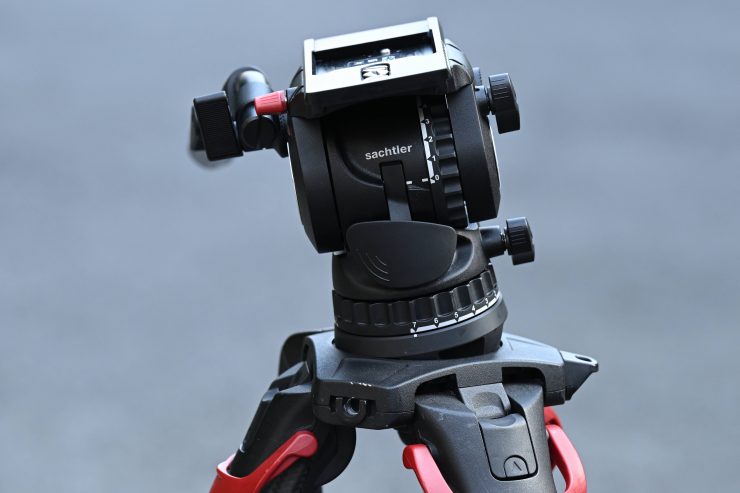

aktiv14T 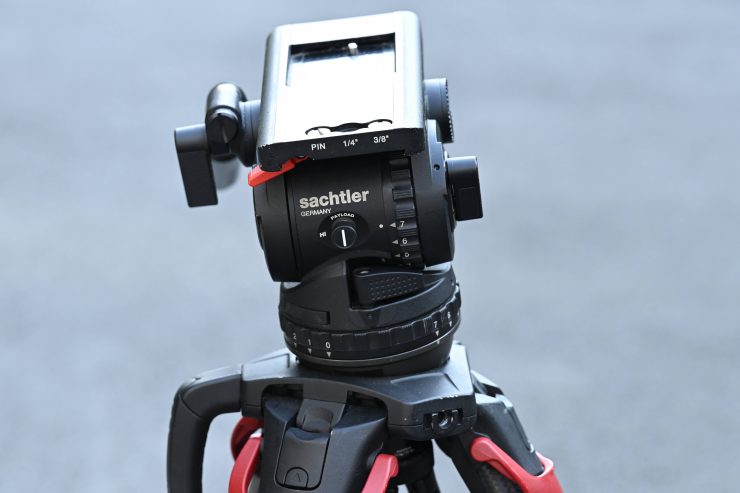
S18 S2
I also compared it to a Sachtler 18P S2 to see how much range of motion there was if you wanted to doa Dutch tilt. The aktiv14T actually seemed to have a little more range of motion than the 18P S2.
Perhaps the biggest benefit of coupling an aktiv head with a Flowtech 75 or Flowtech 100 is speed. Everything becomes a lot quicker when using this combination.
If you are shooting news, documentaries, events, etc. the combination of an aktiv head and a Flowtech tripod is hard to beat, especially if you are constantly making changes throughout the day.
What would you compare the aktiv 14T against?
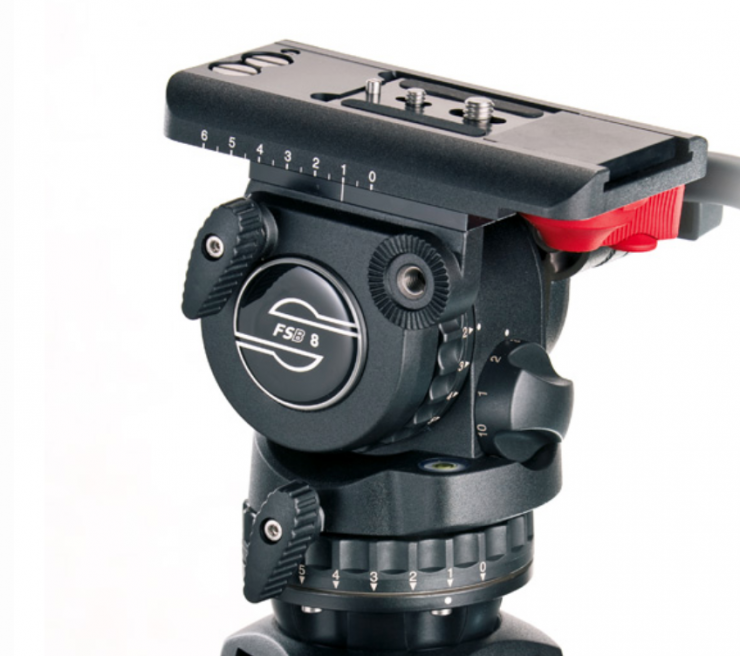
Sachtler told me that the aktiv14T is the equivalent of an 18P S2. What are the differences between the aktiv14T and the 18P S2?
| aktiv14T | 18P S2 | |
| Weight | 7.5 lb / 3.4 kg | 9 lb / 4.1 kg |
| Payload Capacity | 35.3 lb / 0 to 16 kg | 48.5 lb / 2 to 22 kg |
| Counterbalance Steps | 15 | 16 |
| Drag Settings | 7 | 7 |
| SpeedSwap System | Yes | No |
| SpeedLevel System | Yes | No |
As you can see, the aktiv14T is fairly similar to the 18P S2 when it comes to counterbalance and drag settings. The aktiv14T is lighter, but it doesn’t have as high of a payload capacity as the 18P S2.
As I previously alluded to in this review, some of the main competition for the aktiv14T comes in the form of the following fluid heads:
- Sachtler 7+7
- Sachtler 18P S2
- Miller CiNX 3
- Miller CiNX 5
- Miller CiNX 7
- Vinten Vision 10AS
- Cartoni Focus 18
- Cartoni Focus 22
Price & Availability
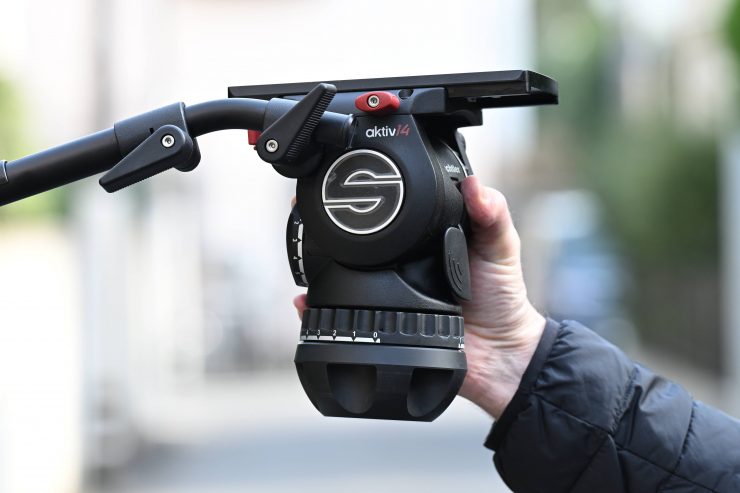
The Sachtler aktiv14T has been available for a while now and it retails for $5,054.00 USD.
How does the price of the aktiv14T compare to some of the competition?
| PRICE | |
| Sachtler aktiv14T | $5,054 USD |
| Sachtler 18P S2 | $6,075.25 USD |
| Sachtler 7+7 | $7,300.75 USD |
| Miller CiNX 3 | $4,288.14 USD |
| Miller CiNX 5 | $5,384.88 USD |
| Miller CiNX 7 | $6,381.99 USD |
| Vinten Vision 10AS | $5,239.25 USD |
| Cartoni Focus 18 | $3,165.00 USD |
| Cartoni Focus 22 | $4,627.00 USD |
As you can see, the price of the aktiv14T makes it competitively priced against the competition.
Sachtler also sells kits that include an aktiv head and a set of Flowtech 100 tripod legs. Those prices are below:
- Sachtler System aktiv14T & flowtech 100 with Ground Spreader $8,189.00 USD
- Sachtler System aktiv14T & flowtech 100 with Mid-Level Spreader $8,588.00 USD
The prices for the accessories are:
- Sachtler aktiv Slider to 100mm Tripod Adapter $617.50 USD
- Sachtler aktiv Head to Slider Carriage Adapter $95 USD
Look, good tripods are not cheap, but they are a smart investment. If you buy a good tripod it can last you decades if you look after it correctly. Years after you have bought and sold your latest camera, your tripod will still be there. I can never quite understand when people spend a lot of money on a digital cinema camera and then they buy the cheapest tripod they can find. Whenever I see people using cheap, horrible tripods with expensive cameras I can never understand the thought process that goes into that decision.
Conclusion
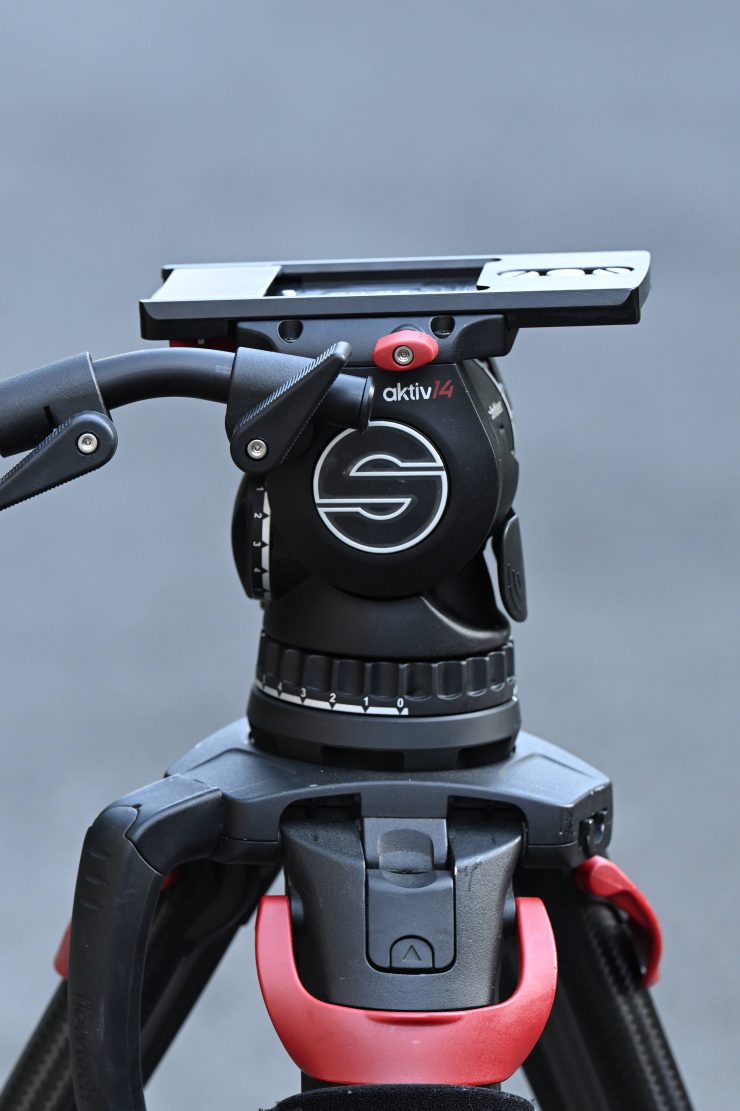
Once you start changing the concept of how a long-standing product works, it is going to take some time to convince users that the change is for the best.
You may or may not like change and whether the aktiv fluid head design works for you will be very much an individual decision.
I personally like to see the innovation of long-standing products. The fluid head has evolved over the years, but the way we use it hasn’t fundamentally changed. By thinking outside of the box Sachtler has attempted to make tasks we do multiple times a day easier. I also like that Sachtler hasn’t discontinued their traditional heads like the 18P S2, because they recognize that not everyone will like the new aktiv design. Giving users a choice is a smart way to go.
In combination with a Flowtech 100 tripod, the aktiv14T head makes for a really good combination. It gives you speed, versatility, a decent payload capacity, and innovations that make using a tripod system easier.
For me, the most important aspect of any tripod system is usability. A fluid head can have all the bells and whistles in the world, but if it isn’t easy to use then those features don’t matter.
The features on the aktiv14T are all practical and they serve a purpose. The head has been well thought out and you can see that a lot of development and testing has gone into making the end product.
The aktiv14T is easy to use, and once you get the hang of it I think a lot of people are going to like it, especially when used in conjunction with a Flowtech 100.

